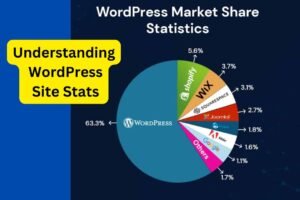1. Introduction
In the quick moving advanced world, site speed and execution have become fundamental for holding client commitment and supporting web-based achievement. Site speed influences client experience as well as impacts web index rankings. A very much upgraded site guarantees quicker stacking times, consistent route, and higher transformation rates. This article investigates key systems and devices for streamlining site speed and execution actually.
2. Understanding the Significance of Site Speed
Site speed is basic for both client fulfillment and Search engine optimization. Studies have shown that even a one-second postpone in stacking time can diminish transformations by up to 7%. For clients, a sluggish stacking site implies dissatisfaction and expected deserting. Web search tools like Google focus on quicker locales in their positioning calculations, making speed streamlining essential for perceivability.
3. Directing a Speed Review
The most important phase in enhancement is leading a speed review. Instruments like Google PageSpeed Bits of knowledge, GTmetrix, and Webpage Test give definite reports on a site’s stacking velocity and feature regions for development. These devices offer bits of knowledge like First Contentful Paint (FCP), Time to Intuitive (TTI), and Aggregate Design Shift (CLS). Inspecting these measurements recognizes the particular components dialing back your site.
4. Advancing Pictures
Pictures frequently make up the biggest part of a site page’s size, which can fundamentally influence stacking times. Packing pictures without losing quality is urgent for speed streamlining. Utilizing instruments like TinyPNG or ImageOptim and picking present day picture designs like WebP can decrease record sizes. Moreover, carrying out lethargic stacking guarantees that pictures load just when they are apparent on the client’s screen, further developing introductory burden time.
5. Minifying CSS, JavaScript, and HTML
Minification alludes to eliminating superfluous characters, spaces, and remarks from code to decrease its size. Minifying CSS, JavaScript, and HTML can have a recognizable effect in load speed. Instruments like UglifyJS, CSSNano, and HTMLMinifier assist with computerizing this interaction. By smoothing out the code, programs can peruse and deliver it quicker, prompting speedier page loads.
6. Utilizing Program Reserving
Empowering program reserving permits site assets, similar to pictures, scripts, and templates, to be put away locally on clients’ gadgets for a set period. This implies that when guests return to your website, their program can stack recently stored content rather than re-downloading it, diminishing burden time. Carrying out storing strategies utilizing .htaccess records or modules like W3 All out Reserve for WordPress can work on this interaction.
7. Utilizing a Substance Conveyance Organization (CDN)
A Substance Conveyance Organization (CDN) circulates your site’s substance across numerous servers around the world. At the point when a client visits your site, the substance is conveyed from the server nearest to their geographic area. This lessens dormancy and further develops load times, particularly for worldwide guests. Administrations like Cloud flare, Akamai, and Amazon Cloud Front offer hearty CDN arrangements that lift site execution fundamentally.
8. Lessening HTTP Solicitations
Every component on a website page (pictures, scripts, CSS records) requires a HTTP solicitation to stack. Lessening the quantity of these solicitations speeds up page load time. Joining CSS and JavaScript records, involving CSS sprites for symbols, and killing pointless modules or outsider contents are successful ways of eliminating HTTP demands and advance execution.
9. Carrying out GZIP Pressure
GZIP pressure decreases the size of your site documents, making them quicker to stack. At the point when a server sends a compacted record, the program de-pressurizes it, which requires less investment than stacking uncompressed information. Most web servers like Apache and NGINX support GZIP pressure, and it tends to be empowered through setup settings or modules, bringing about a huge decrease in information move size.
10. Enhancing Web Facilitating
The presentation of your web facilitating supplier assumes a significant part in your site’s speed. Shared facilitating may be practical yet can dial back your site because of asset limits. Moving up to a Virtual Confidential Server (VPS), committed server, or oversaw WordPress facilitating guarantees that your site gets the vital assets and handling power for ideal execution.

11. Observing and Constant Advancement
Site speed streamlining is certainly not a one-time task. Routinely observing your site’s exhibition and executing essential updates is critical for supported speed. New satisfied, modules, and changes can influence site speed, so consistent evaluating and adjusting are fundamental. Instruments like Beacon and mechanized checking arrangements assist with following execution and give bits of knowledge to progressing upgrades.
12. Conclusion
All in all, improving site speed and execution is a complex methodology that includes different systems, from picture pressure and code Minification to utilizing CDNs and overhauling facilitating plans. Executing these prescribed procedures guarantees a smoother client experience, higher commitment, and better web index perceivability. As the computerized scene advances, remaining proactive with your webpage speed endeavors will keep your internet based presence cutthroat and viable.





